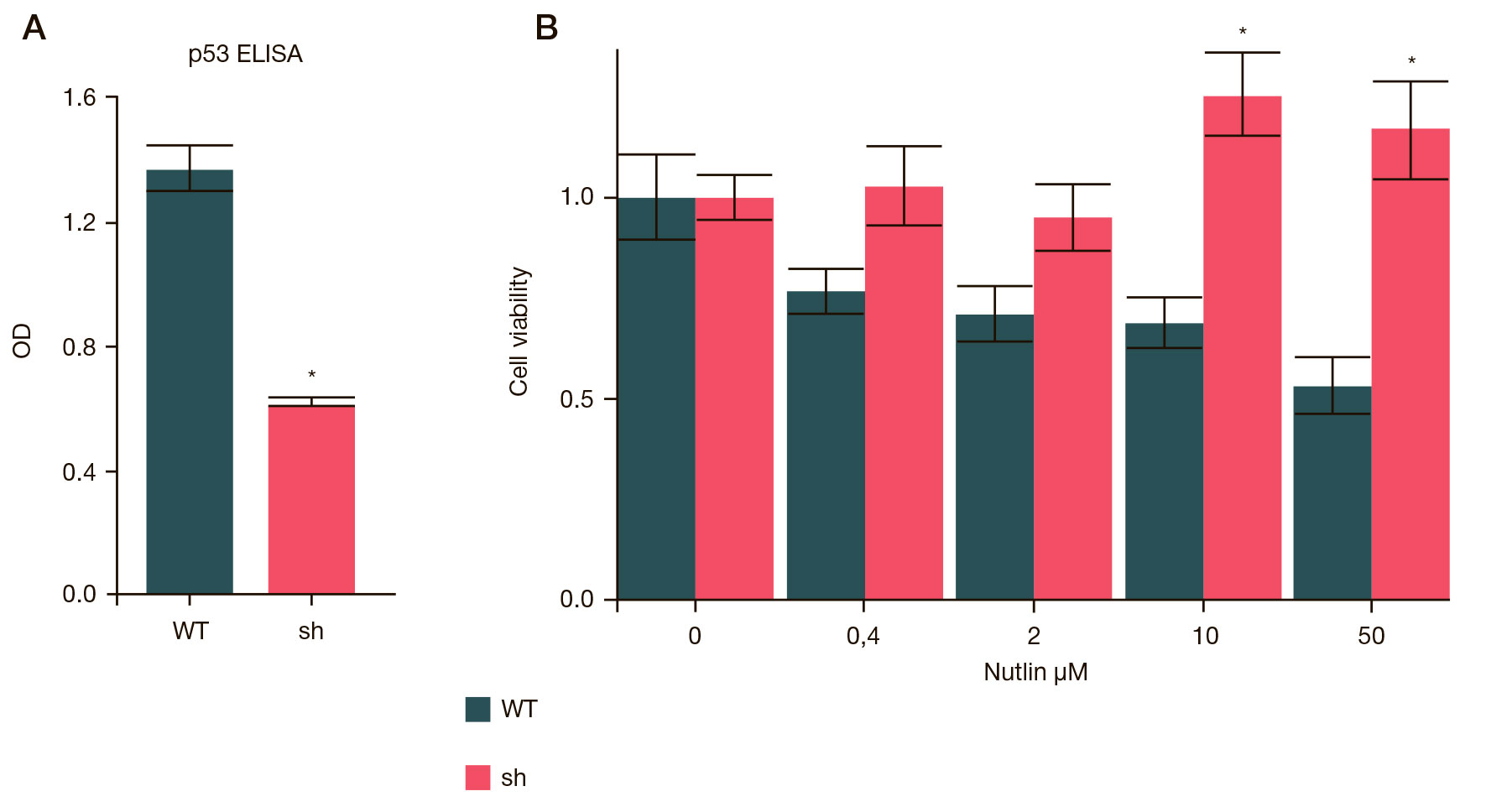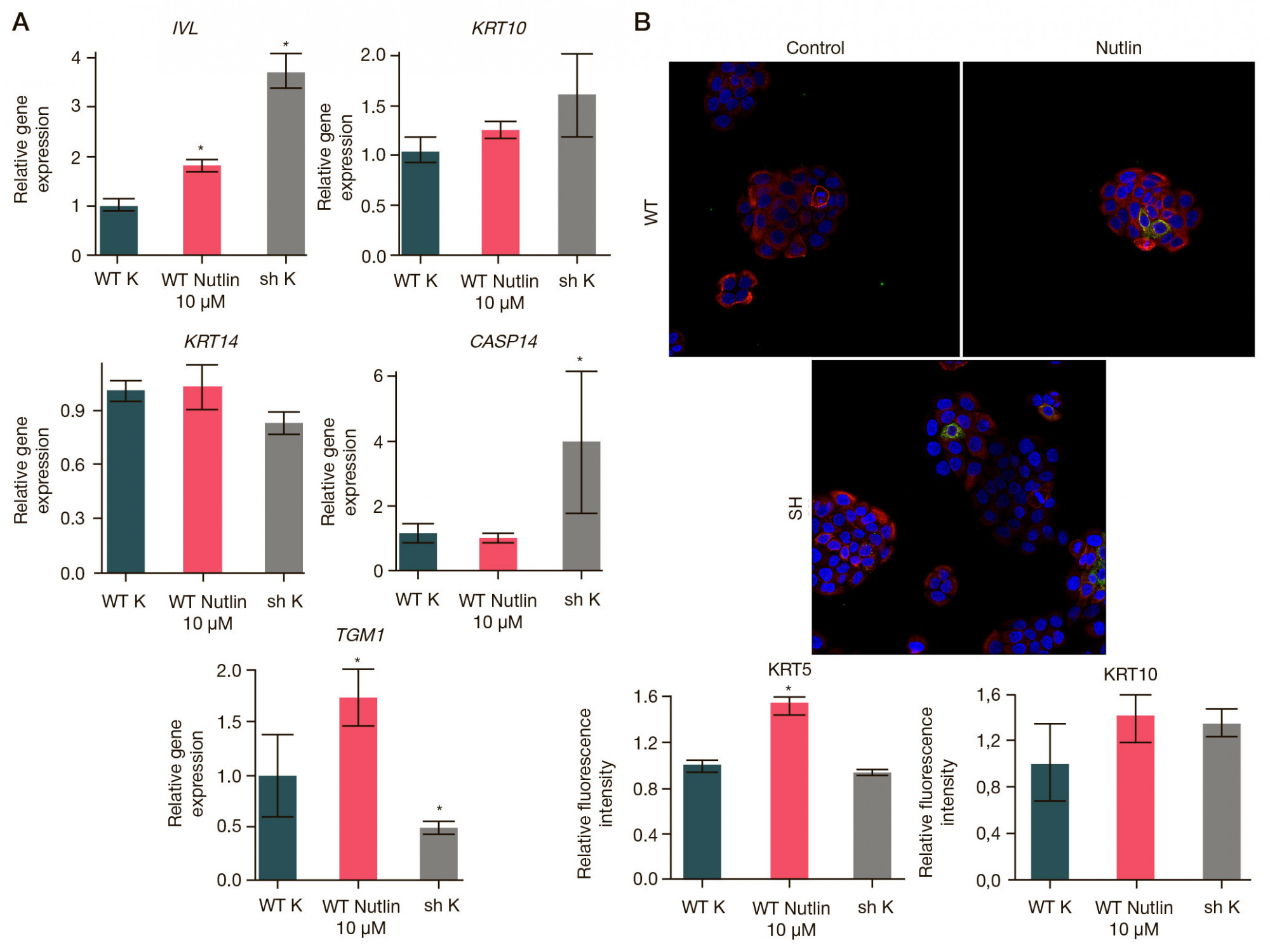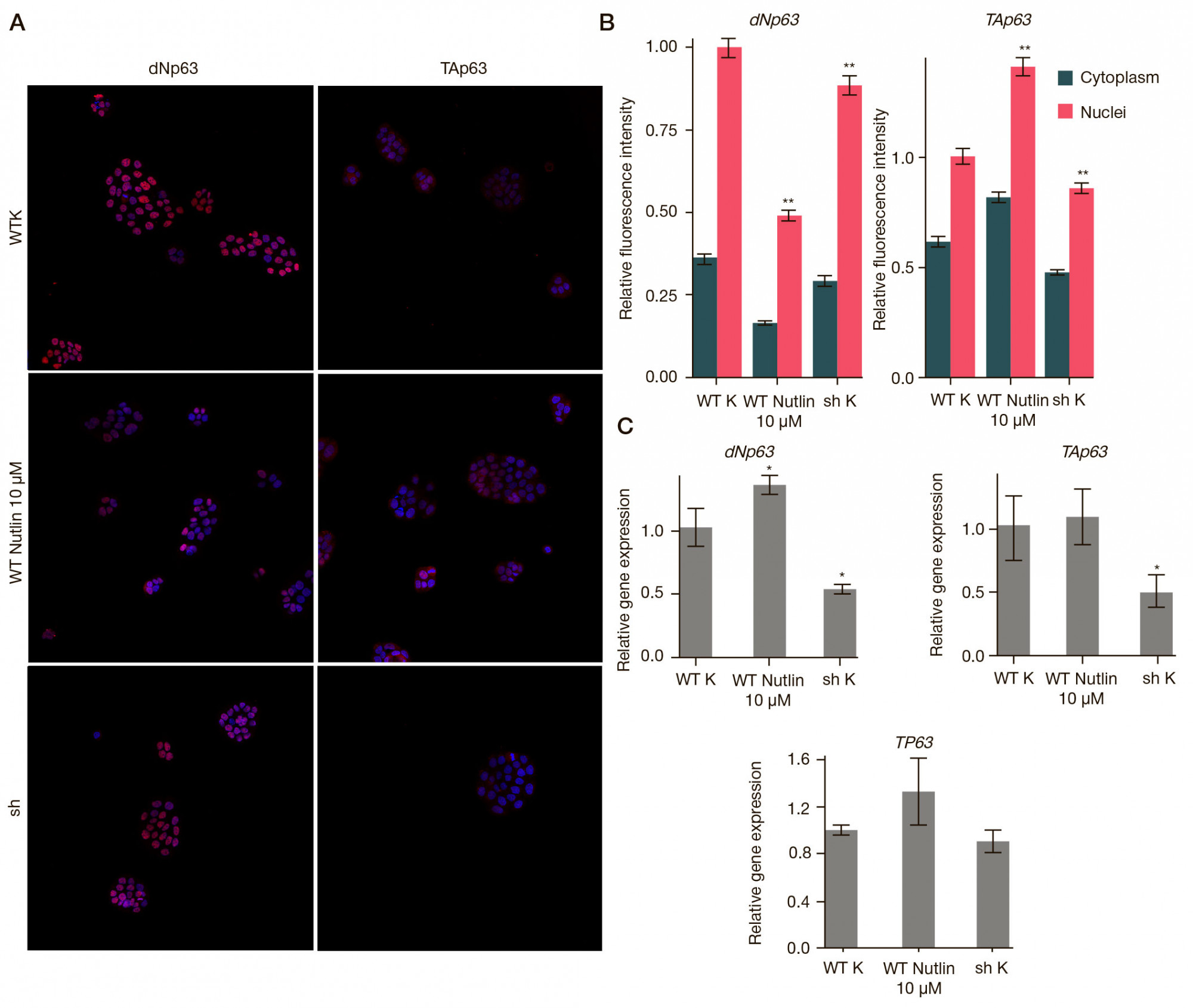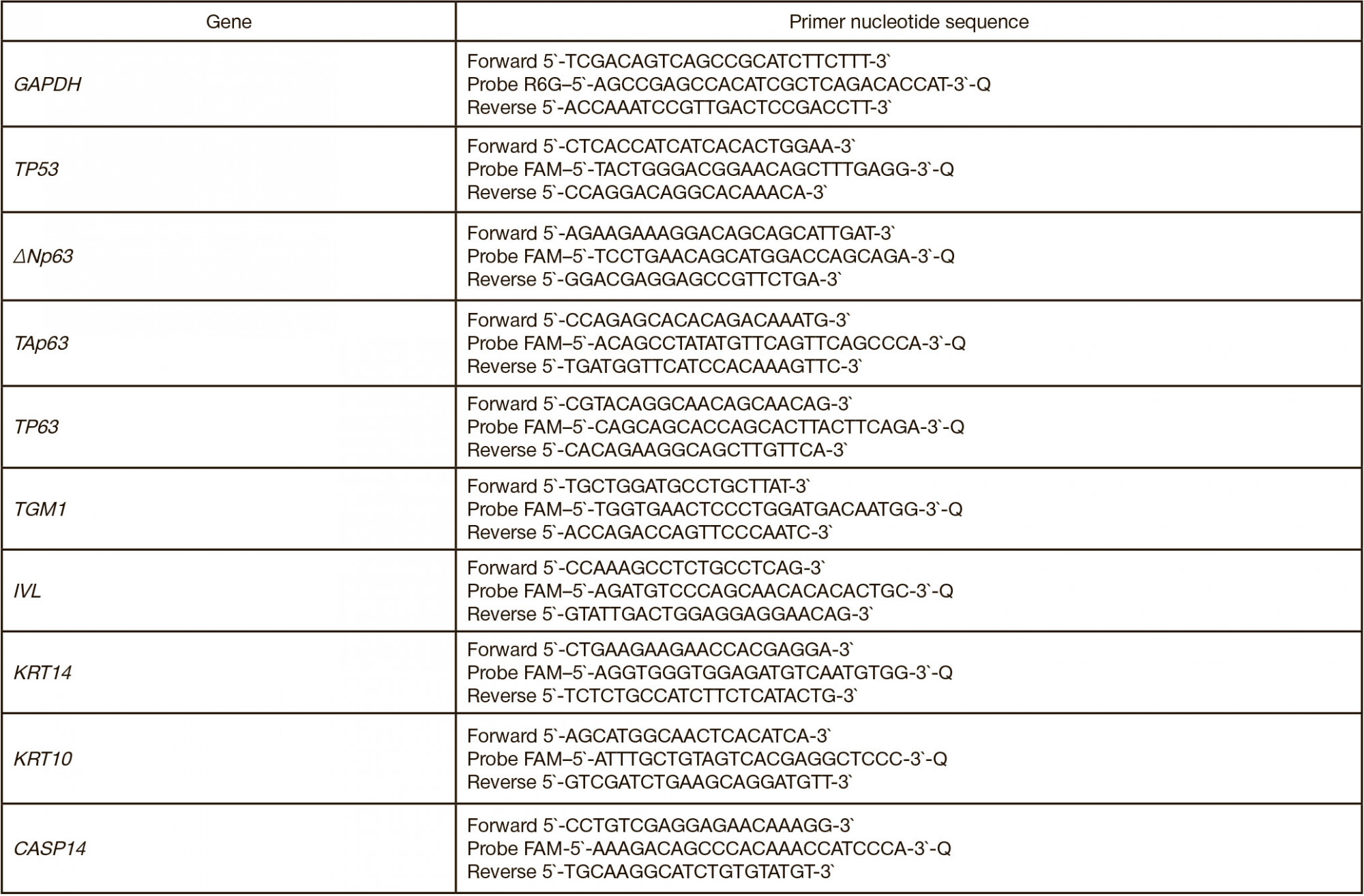
This article is an open access article distributed under the terms and conditions of the Creative Commons Attribution license (CC BY).
ORIGINAL RESEARCH
Impact of р53 modulation on interactions between р53 family members during НаСаT keratinocytes differentiation
1 Orekhovich Institute of Biomedical Chemistry, Moscow, Russia
2 RMA “Perspektiva”, Novosibirsk, Russia
Correspondence should be addressed: Alexander L. Rusanov
Pogodinskaya 10, bld. 8, Moscow, 119121; moc.liamg@vonasur.l.rednaxela
Funding: the study involving p53 gene knockdown, ELISA and PCR tests was performed as part of the Fundamental Scientific Research Programs of the State Academies of Sciences for 2013–2020; experiments with Nutlin-3a were carried out by RMA “Perspektiva” and supported by RFBR, project № 18-44-540031/19.
Author contribution: Luzgina NG, Rusanov AL — study concept; Romashin DD, Kozhin PM, Luzgina NG, Rusanov AL — study design and literature analysis; Romashin DD, Kozhin PM, Karagyaur MN — study planning and execution; Kozhin PM, Romashin DD, Luzgina NG, Rusanov AL — data analysis and interpretation; Kozhin PM, Romashin DD — manuscript writing; Kozhin PM, Romashin DD, Karagyaur MN, Luzgina NG, Rusanov AL — manuscript editing, preparation of the final version of the article.
Compliance with ethical standards: the study was carried out in accordance with the World Medical Association Declaration of Helsinki.




